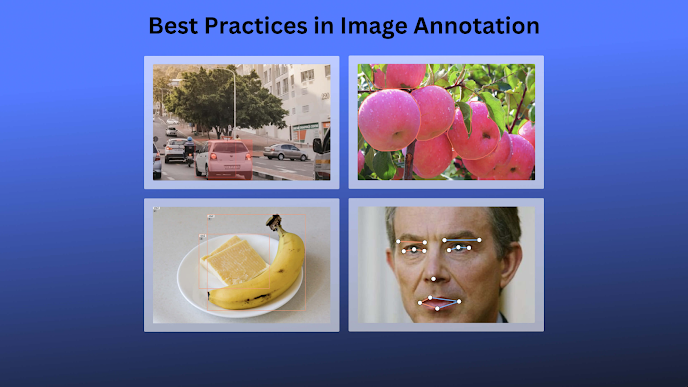From Novice to Pro: Mastering Image Annotation for Effective Machine Learning
.png)
Introduction:
In the rapidly evolving world of technology, mastering the art of Image Annotation Services is becoming increasingly essential, especially for those venturing into the realm of machine learning and artificial intelligence. This article aims to guide you from a novice to a professional in the field of image annotation, a critical process in training AI models.
The Basics of Image Annotation
At its core, image annotation involves labeling or marking up images to make them understandable and usable by machine learning models. This process can range from simple tasks like identifying objects in an image to more complex ones like outlining specific features or emotions in facial recognition systems.
The Importance in Machine Learning
Machine learning models, particularly those based on neural networks, require vast amounts of data to learn from. The quality and accuracy of this data directly impact the model's performance. Image annotation provides the necessary context that allows these models to recognize patterns and make intelligent decisions.
Types of Image Annotation

- Bounding Boxes: The simplest form of annotation, involving drawing rectangles around objects to identify them.
- Polygonal Segmentation: For more complex images, this involves drawing precise shapes around objects to capture their exact outlines.
- Semantic Segmentation: This detailed annotation type involves labeling each pixel of an image to differentiate between objects.
- Keypoint Annotation: Used primarily in facial recognition and pose estimation, this involves marking specific points on an object.
Tools and Technologies
A variety of tools are available for image annotation, ranging from open-source platforms like LabelImg to more sophisticated, AI Data Collection Services powered tools like V7 Labs' Darwin. The choice of tool often depends on the complexity of the task and the volume of images to be annotated.
Best Practices in Image Annotation
- Accuracy and Precision: Ensure annotations are as accurate and precise as possible. Inaccurate annotations can lead to poorly trained models.
- Consistency: Maintain consistency in labeling across the dataset. Inconsistent annotations can confuse the model during the training process.
- Detailed Labeling: The more detailed your annotations are, the better the model will understand the nuances of the images.
- Quality over Quantity: A smaller set of well-annotated images is more valuable than a large set of poorly annotated ones.

Overcoming Challenges
Image annotation can be time-consuming and often monotonous. Leveraging tools that incorporate AI to assist in the annotation process can significantly reduce the workload. Additionally, outsourcing to professional annotation services can be a practical solution, especially for large-scale projects.
Applications of Image Annotation
The applications of image annotation are vast and diverse. In retail, it's used for product recognition and inventory management. In healthcare, it assists in diagnosing diseases from medical imagery. In autonomous vehicles, it helps in object and obstacle recognition.
The Path to Professionalism
- Continuous Learning: Stay updated with the latest tools and techniques in image annotation.
- Practice: The more you annotate, the better you become. Participate in projects that challenge your skills.
- Collaboration: Work with others in the field to learn from their experiences and insights.
- Feedback and Improvement: Regularly review your work and seek feedback to continuously improve your skills.
Conclusion
Mastering image annotation is a journey that requires patience, precision, and a keen eye for detail. By understanding its importance in machine learning, familiarizing yourself with various annotation types, utilizing the right tools, and following best practices, you can transition from a novice to a pro in this field. Your expertise in image annotation will not only contribute to the development of advanced AI models but also pave the way for innovations across various industries.
GTS.AI And Image Annotation Services
Globose Technology Solutions stands as a powerful ally in the field of image annotation services, offering a transformative impact on the efficiency, accuracy, and scalability of these processes. By harnessing advanced AI algorithms, GTS.AI significantly reduces the time and effort required for annotation while maintaining high levels of precision. Its ability to handle large datasets with ease makes it an invaluable tool for projects of all sizes, from small-scale endeavors to extensive industrial applications. Moreover, GTS.AI's intuitive interface and flexible features cater to both novice and expert users, making it a versatile solution for diverse annotation needs.



Comments
Post a Comment